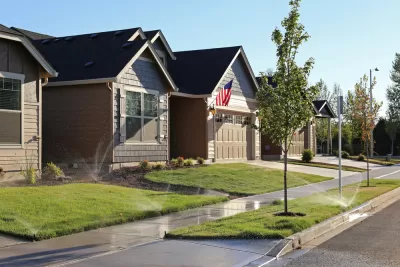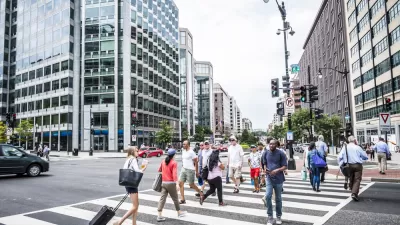Low-income residents have scattered to the periphery, where social services are less accessible.

Aaron Wiener writes in detail about the suburbanization of poverty, focusing on the region around Washington, D.C. as an example of changes underway in cities around the country.
According to Wiener, people growing up in neighborhoods in Washington, D.C. couldn't have imagine how much those places would change—or where those changes would require them to move.
Nobody imagined it, really. Certainly not the original suburbanites, the mostly white pilgrims who fled cities nationwide for peace, safety, space — and sometimes to get away from people who didn’t look like them. Not the federal government, which declared war on poverty in the 1960s but got stuck on an old version of the fight, still targeting low-income clusters in urban centers today rather than the diffusion of people who can no longer afford to live near their work. Not the nonprofit organizations that help low-income populations, which began in the so-called inner city and are largely still there, spending far more money per urban poor person than per suburbanite in need — 10 times as much in the D.C. region.
According to Wiener, low-income residents are leaving downtowns for more suburban locales, where they are "increasingly hidden from public view" and "isolated from the government offices, social services, and networks of friends and relatives on which they once relied." Traditionally wealthy areas, like Montgomery County in Maryland, have seen the fastest increases in poverty while also seeing an influx of non-white residents.
To illustrate the larger societal shift, Wiener follows the story of Delonte Wilkins, a resident of Capital Heights, Maryland, who grew up in the Bloomingdale neighborhood of Northwest Washington, D.C. But the larger story told by the article is about the struggle of non-profits and local jurisdictions to respond to the shifting geography of poverty.
FULL STORY: Poverty is moving to the suburbs. The war on poverty hasn’t followed.

Study: Maui’s Plan to Convert Vacation Rentals to Long-Term Housing Could Cause Nearly $1 Billion Economic Loss
The plan would reduce visitor accommodation by 25,% resulting in 1,900 jobs lost.

North Texas Transit Leaders Tout Benefits of TOD for Growing Region
At a summit focused on transit-oriented development, policymakers discussed how North Texas’ expanded light rail system can serve as a tool for economic growth.

Why Should We Subsidize Public Transportation?
Many public transit agencies face financial stress due to rising costs, declining fare revenue, and declining subsidies. Transit advocates must provide a strong business case for increasing public transit funding.

How to Make US Trains Faster
Changes to boarding platforms and a switch to electric trains could improve U.S. passenger rail service without the added cost of high-speed rail.

Columbia’s Revitalized ‘Loop’ Is a Hub for Local Entrepreneurs
A focus on small businesses is helping a commercial corridor in Columbia, Missouri thrive.

Invasive Insect Threatens Minnesota’s Ash Forests
The Emerald Ash Borer is a rapidly spreading invasive pest threatening Minnesota’s ash trees, and homeowners are encouraged to plant diverse replacement species, avoid moving ash firewood, and monitor for signs of infestation.
Urban Design for Planners 1: Software Tools
This six-course series explores essential urban design concepts using open source software and equips planners with the tools they need to participate fully in the urban design process.
Planning for Universal Design
Learn the tools for implementing Universal Design in planning regulations.
City of Santa Clarita
Ascent Environmental
Institute for Housing and Urban Development Studies (IHS)
City of Grandview
Harvard GSD Executive Education
Toledo-Lucas County Plan Commissions
Salt Lake City
NYU Wagner Graduate School of Public Service





























